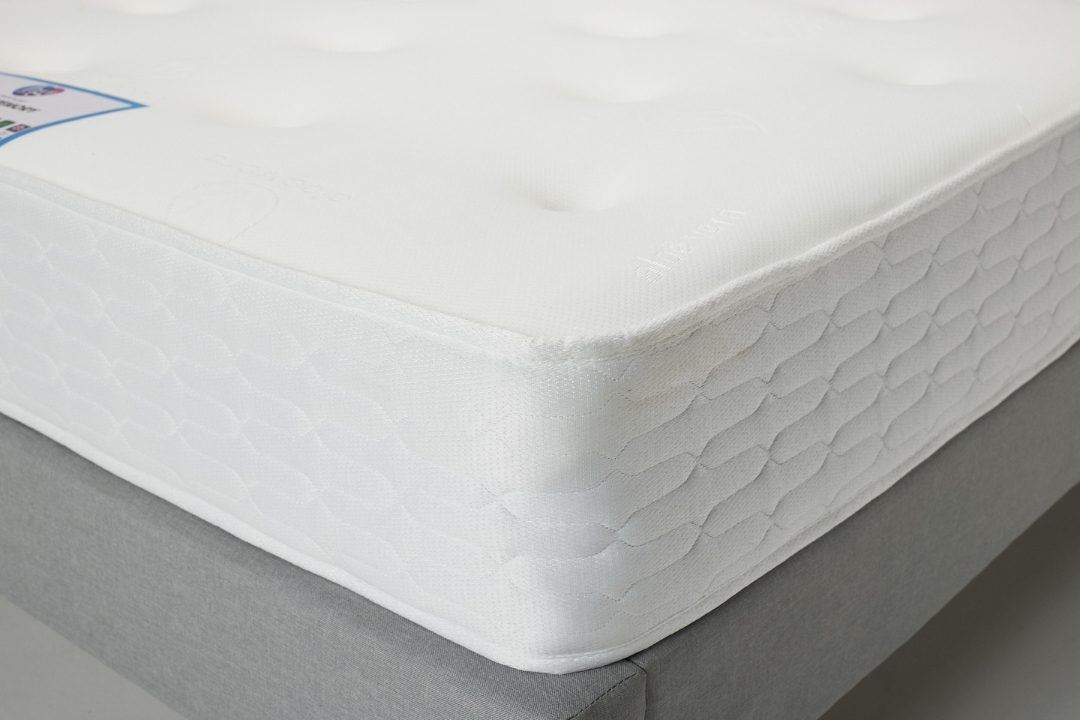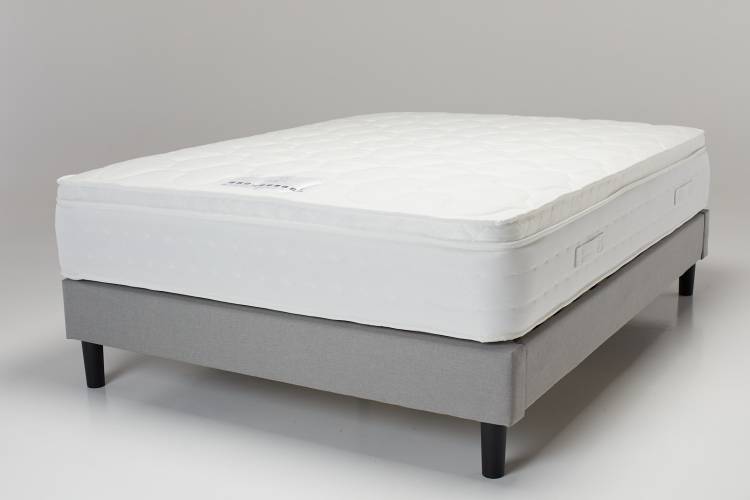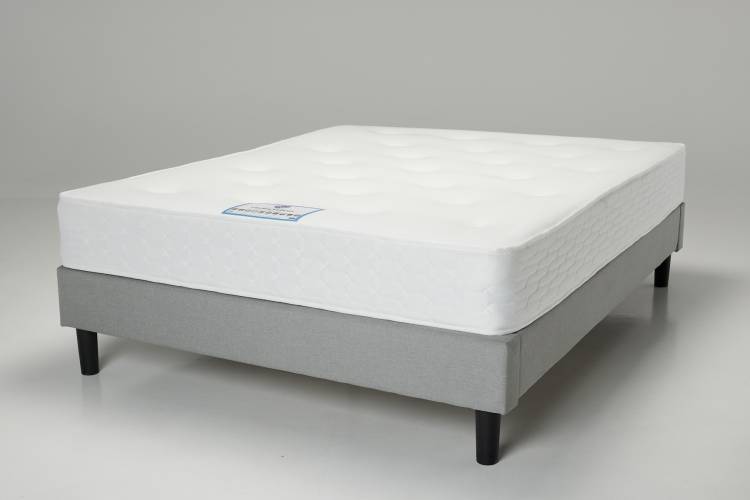If you’ve ever found yourself wrestling with your mattress for a decent night’s rest, you are not alone. The world of mattresses can be a bit of a maze, but fear not! Today, we’re unraveling the secrets of the memory foam mattress – the unsung hero of dreamy slumbers.
What Is A Memory Foam Mattress?
Before we dive into the wonders of memory foam mattresses, let’s demystify this sleep-inducing marvel. Imagine a material that responds to your body heat, gently cradling you into a world of comfort. That’s memory foam, initially developed by NASA in the 1960s to improve the comfort of astronauts during space flights, but now a daily luxury for us mere Earthlings.
Memory foam moulds to your body contours, offering personalised support. No more creaky springs or lumpy surfaces disrupting your beauty sleep. It’s the Goldilocks of mattresses – just right!
How Does The Memory Foam Work?
Memory foam can change its shape and density in response to heat and pressure, and then return to its original form when the heat and pressure are removed.
When you lie on a memory foam mattress, the viscoelastic material in the memory foam is temperature-sensitive and reacts to your body heat and weight, and moulds to your contours, creating a customised sleeping surface that cradles your curves and supports your spine. This way, memory foam can distribute your body weight evenly across the mattress, and relieve pressure points that can cause pain and discomfort.
Memory foam can also adjust to your movements during the night, and provide consistent support and comfort throughout your sleep.
What Types of Memory Foam Mattress Are Available?
Not all memory foam mattresses are created equal. They come in different types, depending on the composition and structure of the foam. Let’s break down the most common types of memory foam mattress to help you make an informed buying decision.
Traditional Memory Foam Mattress
The original type of memory foam that was developed by NASA, it is also known as standard or classic memory foam. With that classic sink-in feel, it’s perfect for those who love to be embraced by their mattress. It can provide you with excellent comfort and support, as it conforms to your body shape and weight, and reduces pressure points. However, it can also retain heat, emit odour and have a slow response time, which means it can take longer to bounce back to its original shape after you get up.
Gel Memory Foam Mattress
Feeling a bit hot under the covers? Gel memory foam cools things down, offering a refreshing touch to your slumber sanctuary. With gel beads or particles infused into the foam, this type of memory foam is also known as gel-infused memory foam. The gel helps regulate the temperature of the foam, and make it cooler and more breathable. It can also make the foam more resilient and responsive, which means it can spring back faster to its original shape after you get up. However, it can also be more expensive, and have a lower density and durability than traditional memory foam.
Air-Cool Memory Foam Mattress
This type of memory foam has air channels or pockets in the foam, and it is also known as open-cell memory foam. The air can help improve the airflow and ventilation of the foam, and make it cooler and more breathable. It can also make the foam more responsive and bouncy, which means it can adapt faster to your movements and pressure points. However, it can also be less supportive and firm than traditional memory foam, and have a lower density and durability.
Plant-Based Memory Foam Mattress
For the eco-conscious, plant-based memory foam is a fantastic choice. It is also known as eco-friendly or green memory foam. Made from natural and renewable materials – such as soy, bamboo or tea – it’s a guilt-free and restful sleep option. It can also make the foam more breathable and odourless, and have a faster response time. However, it can also be more expensive, and have a lower density and durability than traditional memory foam.
Copper-Infused Memory Foam Mattress
Need a little extra oomph? Copper-infused memory foam, known for its antimicrobial properties, keeps your mattress fresh and clean. Say goodbye to pesky allergens and hello to a healthier sleep environment. However, copper-infused memory foam mattresses have a higher cost compared to traditional options. The added weight, due to copper particles, also makes these mattresses heavier and potentially less convenient to move or handle.
How To Choose The Right Memory Foam Mattress For You
When shopping for a memory foam mattress, you need to consider the size, firmness and thickness of the mattress, as these factors can affect your comfort, support and satisfaction.
Size
The size of your memory foam mattress depends on the size of your bed frame, your room space and your personal preference. You can choose from various sizes – such as single, small double, double king or super king – depending on how much space you need and want.
You can also measure your bed frame and your room space before buying a memory foam mattress, to make sure it fits well and leaves enough room for other furniture and activities. You can also check the dimensions and weight of the memory foam mattress, to make sure you can handle it easily and safely.
Firmness
The firmness of your memory foam mattress depends on your sleeping position, your body weight and your comfort preference. You can choose from different levels of firmness, such as soft, medium or firm, depending on how much support and cushioning you need and want.
Generally, side sleepers prefer softer memory foam mattresses, as they can provide more pressure relief and contouring for their hips and shoulders. Back and stomach sleepers prefer firmer memory foam mattresses, as they can provide more support and alignment for their spine and pelvis.
However, these are general guidelines, and you should always choose the firmness level that suits your personal comfort and preference. You can also test the firmness of the memory foam mattress before buying it, by lying on it for at least 15 minutes, and checking how it feels on your body and pressure points.
Thickness
The thickness of your memory foam mattress depends on the quality and quantity of the foam layers, and your comfort preference. You can choose from different thicknesses, such as 10, 12, or 14 inches, depending on how much cushioning and support you need and want.
Generally, thicker memory foam mattresses have more foam layers, which can provide more comfort and durability, but they can also be more expensive and heavier. Thinner memory foam mattresses have fewer foam layers, which can provide less comfort and durability, but they can also be cheaper and lighter.
However, these are general guidelines, and you should always choose the thickness that suits your personal comfort and preference. You can also check the thickness of the memory foam mattress before buying it, by measuring it with a tape measure, and comparing it with your bed frame and sheets.
What Are The Pros and Cons of Memory Foam Mattresses?
Memory foam mattresses have many advantages that make them a great choice for many sleepers, but they also have some drawbacks that you should be aware of before buying one.
Pros of a Memory Foam Mattress
Comfort
Memory foam mattresses can provide you with a high level of comfort, as they conform to your body shape and weight, and create a cosy and snug feeling. Memory foam can also help you sleep in a natural and healthy posture, as it aligns your spine and supports your neck and shoulders.
Support
Memory foam mattresses can offer you excellent support, as they adapt to your movements and pressure points, and prevent sagging and sinking. Memory foam can also help reduce motion transfer, which means you won’t feel your partner’s movements on the other side of the bed, and you can enjoy a peaceful and uninterrupted sleep.
Health
Memory foam mattresses can have various benefits for your health, such as relieving back pain, improving blood circulation and preventing allergies. Memory foam can help ease the tension and stress on your muscles and joints, and improve your posture and alignment. Memory foam can also improve your blood flow, as it reduces the pressure on your veins and arteries, and allows more oxygen and nutrients to reach your cells and tissues.
Memory foam can also prevent dust mites, mould, and bacteria from accumulating in your mattress, as it has a dense and hypoallergenic structure, and it can resist moisture and odours.
Cons of a Memory Foam Mattress
Heat
Memory foam mattresses can retain heat, as they respond to your body temperature, and have a low level of breathability. This can make you feel hot and sweaty during the night, especially if you live in a warm climate, or if you are a naturally warm sleeper. To avoid this problem, you can look for memory foam mattresses that have cooling features, such as gel-infused foam, open-cell structure or breathable covers.
Odour
Memory foam mattresses can emit a chemical smell, as they are made of synthetic materials, and undergo a process called off-gassing, which is the release of volatile organic compounds (VOCs) into the air. This can be unpleasant and irritating for some people, especially if they have sensitive noses or allergies. To minimise this issue, you can air out your memory foam mattress for a few days before using it, and use a mattress protector or a fitted sheet to cover it.
Weight
Memory foam mattresses can be heavy, as they have a high density and thickness. This can make them difficult to move, rotate or flip, especially if you are alone or have limited space. To solve this problem, you can look for memory foam mattresses that have handles, which makes them easier to transport and set up. You can also ask for help from a friend or a professional when you need to move your memory foam mattress.

How To Care For and Maintain Your Memory Foam Mattress
Once you have bought your memory foam mattress, you need to take good care of it, to ensure that it lasts long and stays in good condition. Here are some tips on how to care for and maintain your memory foam mattress:
Air It Out
When you first receive your memory foam mattress, you should air it out for at least 24 hours, to allow it to expand to its full size and shape, and to get rid of any odour or moisture. You should also air it out regularly, at least once a week, to keep it fresh and dry. You can do this by opening the windows and doors, and letting the natural air and sunlight circulate in your room. You can also use a fan or a dehumidifier to speed up the process.
Protect It
You should always use a mattress protector or a fitted sheet to cover your memory foam mattress, to protect it from stains, spills, dust, dirt and allergens. You should also wash your mattress protector or fitted sheet frequently, at least once or twice a month, to keep it clean and hygienic. You can use a mild detergent and a gentle cycle, and dry it on a low heat or air dry it. You should avoid using bleach, fabric softener, or iron, as they can damage the fabric and the foam.
Clean It
You should also occasionally clean your memory foam mattress to remove any stains, spills or odours. You can do this by using a mild soap and water solution, and a soft cloth or sponge, and gently dabbing the affected area. You should avoid soaking or scrubbing the foam, as this can damage it and cause it to lose its shape and density. You should also avoid using harsh chemicals or cleaners, as they can harm the foam and your health. You should also dry the foam thoroughly, by using a towel or a hairdryer, and airing it out for a few hours. We recommend you consult a professional cleaning service regarding the removal of any persistent stains.
Rotate It
You should also regularly rotate your memory foam mattress to prevent sagging and uneven wear and tear. You can do this by flipping or turning your memory foam mattress every three to six months, depending on how often you use it and how heavy you are. You should also change your sleeping position and spot, to distribute your body weight evenly across the mattress, and avoid creating indentations or impressions.
KEY TAKEAWAYS ABOUT A MEMORY FOAM MATTRESS
The DOs of Buying a Memory Foam Mattress
• DO set a budget. Determine your budget range early on. Memory foam mattresses come in a variety of price points, so knowing your budget helps narrow down choices and prevents overspending.
• DO measure your bed frame. Ensure the mattress size aligns with your bed frame. Measure the frame and leave space for other furniture, guaranteeing a snug fit without overcrowding your room.
• DO consider firmness levels, Understand your preferred firmness level. Memory foam mattresses come in different firmness options, from soft to firm. Choose one that aligns with your comfort preferences and sleep position.
• DO read customer reviews. Gain insights from the experiences of others. Customer reviews can offer real-world perspectives on comfort, durability and overall satisfaction with a particular memory foam mattress.
• DO test for yourself, if possible. If feasible, try out mattresses in-store or take advantage of trial periods offered by online retailers. Your comfort is subjective, so firsthand experience is invaluable.
The DON’Ts of Buying a Memory Foam Mattress
• DON’T overlook your sleeping position. Your preferred sleeping position influences the ideal firmness level. Don’t disregard this factor, choose a mattress that supports your spine and provides comfort based on how you sleep.
• DON’T ignore weight limits. Be aware of weight limits specified by the manufacturer. Ignoring this could affect the mattress’s durability and performance over time, particularly for individuals with higher body weights.
• DON’T forget about allergies. If you have allergies, don’t overlook the hypoallergenic features of memory foam mattresses. Choose options that resist dust mites and allergens for a healthier sleep environment.
• DON’T assume all memory foam is the same. Different types of memory foam offer varying features. Don’t assume all memory foam mattresses are identical. Research the specific type that aligns with your preferences.
• DON’T underestimate the power of outlet stores. You might just stumble upon a gem at a fraction of the original price. It’s like finding buried treasure, but comfier. Outlet shopping is a treasure hunt for the savvy mattress shopper, and the prize is a great night’s sleep.
Do Other Mattress Experts Have Any More Advice Or Buying Tips?
“Memory foam is popular for mattresses for good reason. Ideal for couples, memory foam prevents you from feeling your sleeping partner move around at night. Unlike innerspring mattresses that easily transfer motion, memory foam absorbs the movement so you’re less likely to feel disturbances.”
Lexie Sachs at Good Housekeeping
“They’re very quiet. Anyone who has ever slept on a coil bed will know that they can be very noisy, especially as it gets older. As a memory foam mattress is made from foam, it shouldn’t make any noise at all when you twist and turn during the night.”
Lauren Bradbury at Ideal Home
“On average, a good quality memory foam mattress should last around eight years. The truth is, there are multiple factors that affect how long a mattress lasts. These include how often you sleep on it, how many of you are sleeping on it, your body weight/s and how well you care for it. The latter includes flipping or rotating your mattress according to the manufacturer’s advice, and learning how to clean a mattress to help it last longer.”
Ruth Hamilton at Tech Radar
“These mattresses feel very luxurious. Older-style memory foam mattresses had a reputation for making people overheat, as they would radiate heat back up into the body, but new-style memory foam has moved on from this and it shouldn’t be an issue.”
Zoe Phillimore at The Independent
“Memory foam mattresses generally can’t be turned over. But you can turn them around, and some mattresses have handles which make this easier to do.”
Lisa Galliers at Which?
There you have it, the ultimate guide to choosing, buying and caring for your memory foam mattress. We hope that this buyer’s guide has helped you learn more about memory foam mattresses, and how to choose the best one for your needs and preferences. If you have any comments or questions, please feel free to use the comments section below. We would love to hear from you. Happy shopping and sleeping! 😴
Memory Foam Mattress – Shop Now
Looking to upgrade your sleep game without breaking the bank? Check out our memory foam mattress range at Furniture Outlet. Whether it’s the perfect fit or a material that whispers comfort, our memory foam marvels blend seamlessly with your bedroom vibe. They’re not just mattresses, they’re the cool cats of coziness. Spruce up your bed with our laid-back and ultra-comfy memory foam mattresses!
Alton Memory Foam Mattress from only £329
(3ft Single, 4ft Small Double, 4ft6 Double, 5ft King & 6ft Super King sizes available)
Crown Memory Foam Mattress from only £159
(3ft Single, 4ft Small Double, 4ft6 Double, 5ft King & 6ft Super King sizes available)
Memory Foam Mattresses – View All
More Mattress Blogs You May Be Interested In…
Selecting A Mattress For The Bed Rotting Trend
Top 5 Signs It’s Time To Buy A New Mattress
Please note that the pricing/availability information displayed in this blog article, including photos and videos, were correct at the time of sale and may be subject to change without notice.
Follow us on Instagram or TikTok for the latest products, special offers & styling tips.
Do You Need More Help?
If you have any questions or tips regarding memory foam mattresses, please leave a comment in the section below.






Thank you for sharing useful info
Elegant, worth exploring